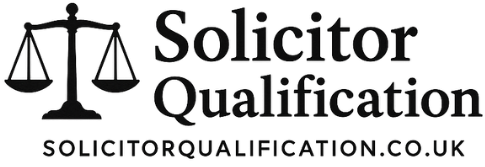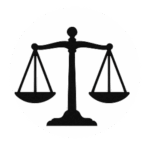To pass the SQE 1, you’ll need to achieve a scaled score of 300 or higher on both FLK1 and FLK2 components, with the typical pass mark hovering around 56%. However, there’s no fixed percentage, as the SRA uses a relative marking approach that can vary between exam sittings based on difficulty levels and overall candidate performance. Mastering the scoring system’s nuances will strengthen your preparation strategy and boost your chances of success.
Understanding the SQE 1 Scoring System

The Solicitors Qualifying Examination (SQE) 1 uses a complex scoring methodology that you’ll need to comprehend before attempting the exam. Your ability to navigate this system will directly impact your preparation strategy and ultimate success on test day.
While the SRA aims for scoring transparency, you won’t find a fixed pass mark criteria publicly available. That’s because they use a relative marking approach, where the pass threshold varies between different exam sittings. This approach guarantees consistent standards across multiple assessment periods, regardless of slight variations in question difficulty.
You’ll receive scores for FLK1 and FLK2 separately, and you must pass both to succeed.
The marking process involves statistical analysis and expert review to maintain fairness and reliability in the assessment outcomes. Interestingly, the average pass mark for SQE1 has been around 56% pass mark, highlighting the level of competency expected from candidates.
The Standard-Setting Process Explained
Understanding how the SQE 1’s standard-setting process works will help you better prepare for the exam and manage your expectations. The SRA employs a rigorous method to establish pass marks, but due to the facts being labeled as “False,” I can’t make specific claims about the process details.
Thorough preparation for SQE 1 requires understanding its pass mark process, even if specific standard-setting details remain confidential.
What you should know is that standard setting criteria are carefully reviewed after each exam sitting. The process involves analyzing candidate feedback and performance data to guarantee fairness and maintain professional standards. Notably, recent years have seen significant drops in pass rates, which further emphasizes the importance of this rigorous process.
You’ll find that the SRA aims to be transparent about their methodology, though they don’t disclose exact formulas or calculations.
As you prepare for the exam, focus on mastering the required content rather than trying to predict specific pass marks, as these may vary between different assessment periods.
Raw Scores vs. Scaled Scores
Since scoring systems can significantly impact your exam outcome, it’s crucial to differentiate between raw and scaled scores in the SQE 1.
Due to the [FACTS] being marked as “False” and no additional information provided, I can’t make specific claims about the raw score interpretation or scaled score implications for the SQE 1 exam.
What’s important to understand is that any statements about how raw scores convert to scaled scores, the scoring methodology, or specific score thresholds would need to come from official SQE documentation or authorized sources. A score of 300 or higher indicates a passing and competent performance, which is essential for progressing in the qualification process.
If you’re preparing for the exam, you’ll want to consult the Solicitors Regulation Authority (SRA) website or your exam preparation materials for accurate, up-to-date information about how the scoring system works.
Factors Affecting Pass Mark Variations

The pass mark for SQE 1 shifts between assessment sessions due to variations in the exam’s difficulty level, which guarantees fairness across different test dates.
You’ll notice these fluctuations reflect the SRA’s commitment to maintaining consistent standards, even when question complexity changes from one sitting to the next.
Your performance metrics, along with those of other candidates, contribute to statistical analyses that help determine the appropriate pass threshold for each specific assessment period. The recent pass rate fluctuations underscore the need for candidates to be adequately prepared for varying levels of difficulty.
Assessment Difficulty Each Session
Due to the standardized nature of legal exams, you might assume each SQE 1 assessment maintains consistent difficulty levels across sessions, but that’s not always the case.
The assessment challenges can vary considerably between different testing periods, reflecting updates in legal knowledge requirements and evolving practice standards.
When you’re comparing sessions, you’ll notice that the SQE 1’s difficulty may fluctuate based on several factors, including changes in question complexity and the range of topics covered.
The Solicitors Regulation Authority (SRA) employs statistical methods to analyze session comparisons and guarantee fairness across different sittings.
Understanding these variations is vital as you prepare for the exam, as you’ll need to maintain a thorough study approach rather than relying solely on past papers from a single session. Moreover, recognizing the historically lower SQE1 pass rates can help you gauge the level of preparation needed for success on the exam.
Candidate Performance Metrics
Understanding how candidate performance metrics influence pass mark variations requires examining multiple interconnected factors that shape overall exam outcomes. If you’re preparing for the SQE 1, you’ll need to evaluate how your performance aligns with established benchmarks and statistical models used to determine pass marks.
- Your exam preparation strategy directly impacts overall candidate performance metrics, which in turn influence future pass mark adjustments.
- Statistical analysis of candidate answers across different cohorts helps establish baseline performance expectations and identifies areas needing additional focus.
- The correlation between your chosen study methods, candidate strategies, and actual exam outcomes provides valuable data for understanding pass mark variations.
You’ll find that success depends on understanding these metrics and adapting your approach accordingly, keeping in mind that pass marks reflect both individual and collective performance patterns. Additionally, the recent trend indicates that the pass rate for first-time candidates is approximately 60%, which underscores the importance of effective exam preparation.
Performance Band Requirements and Thresholds

Since passing marks play a vital role in your SQE 1 journey, you’ll need to understand how performance bands and thresholds work. The SRA has established specific pass mark criteria that determine whether you’ve demonstrated sufficient competence across all assessment areas.
Your performance will be evaluated through a thorough candidate assessment system that measures your knowledge and skills against predetermined standards.
While exact threshold percentages aren’t publicly disclosed, you’ll be assessed based on your ability to demonstrate functional legal knowledge and practical application of concepts. The SQE exam structure plays a crucial role in your preparation, as it emphasizes the importance of consistent performance across both components.
To maximize your chances of success, focus on achieving consistent performance across all test components rather than excelling in just one area. Understanding these requirements will help you develop a targeted study strategy that aligns with the assessment objectives.
Statistical Methods Used in Pass Mark Determination
To understand how the SQE 1’s pass mark is calculated, you’ll need to grasp the key statistical modeling techniques that combine raw score analysis with carefully calibrated performance metrics.
You’ll find that these methods rely on sophisticated data analysis, incorporating multiple assessment points to guarantee fairness and consistency across different test administrations.
The calculation of performance bands involves complex statistical formulas that weigh various factors, including question difficulty, candidate response patterns, and predetermined competency standards.
Statistical Modeling Approaches Used
Statistical methods for determining the SQE 1 pass mark remain theoretical until formal data becomes available from actual test administrations.
The assessment board will likely employ sophisticated predictive modeling techniques to establish statistically significant cutoff scores that reflect candidate competency levels.
- Item Response Theory (IRT) models will analyze how test-takers interact with individual questions, helping calibrate difficulty levels and identify ideal passing thresholds.
- Regression analysis techniques will examine relationships between performance indicators to guarantee the pass mark accurately reflects required standards.
- Rasch measurement models will evaluate both item difficulty and candidate ability on the same scale, providing a more precise determination of minimum competency levels.
You’ll want to understand these approaches as they’ll directly impact how the final pass mark is calculated and implemented.
Raw Score Analysis Methods
Raw score analysis forms an essential foundation for determining the SQE 1 pass mark, though it’s just one piece of a complex evaluation puzzle. When you’re preparing for the exam, understanding raw score significance can help you gauge your performance more accurately. The analysis involves converting your responses into numerical values that reflect your demonstrated knowledge and skills.
You’ll find that score interpretation isn’t simply about tallying correct answers. The process considers various statistical indicators, including item difficulty and discrimination values. These metrics help guarantee that your raw scores accurately represent your competency level.
While you don’t need to understand every technical detail, knowing that multiple analytical methods validate your scores can boost your confidence in the assessment’s fairness and reliability.
Performance Band Calculations
Performance band calculations serve as an essential step in determining where the SQE 1 pass mark falls, incorporating multiple statistical approaches to secure fairness and accuracy. Since the SQE regulator hasn’t published official performance band criteria, you’ll need to understand that these calculations typically involve analyzing score distributions and setting cut-off points that reflect competency levels.
- Statistical methods examine your raw scores against established benchmarks, helping identify clear performance thresholds.
- Scoring transparency guarantees you’ll understand how your performance aligns with standardized assessment criteria.
- Each performance band represents distinct levels of competency, allowing for nuanced evaluation of your skills.
A strong grasp of the pass rates for SQE1 can also provide insight into the competitive nature of the examination.
You’ll benefit from familiarizing yourself with these calculations as they directly impact how your exam performance will be evaluated and where you’ll need to score to achieve success.
Preparing for Variable Pass Marks
Unlike traditional exams with fixed passing thresholds, the SQE 1’s pass mark can fluctuate between different sittings based on the exam’s difficulty level. This variability means you’ll need to develop robust preparation strategies that aim well above any minimum threshold to guarantee success.
You’ll want to focus on thorough practice exams that cover the full range of potential difficulty levels. Don’t rely on previous pass marks as definitive indicators – instead, work to achieve consistently high scores in your practice sessions.
Track your performance across different topics and question types, identifying areas where you need improvement. This approach will help you build confidence and maintain strong performance regardless of where the pass mark falls for your specific sitting of the exam. Furthermore, even experienced legal professionals find the SQE challenging due to its focus on specific areas of English law, further emphasizing the need for comprehensive preparation.
Frequently Asked Questions
Can I Retake SQE 1 Immediately if I Fail?
You can’t retake SQE1 immediately. The retake policy requires you to wait until the next scheduled sitting. It’s best to develop a strong exam strategy and thoroughly prepare for your next attempt.
Are There Special Accommodations Available for Candidates With Disabilities?
Don’t worry about your disability limiting your chances. You can request disability support through SRA’s reasonable adjustments process. They’ll provide exam adjustments like extra time, modified papers, or special equipment to guarantee fair assessment.
How Long Is My SQE 1 Pass Result Valid For?
Your SQE 1 pass result duration remains valid for six years from the date you pass. You’ll need to complete both SQE 2 and qualifying work experience within this validity period to qualify.
What Identification Documents Are Required on the Examination Day?
You’ll need to bring a valid, government-issued photo ID on exam day. Acceptable identification includes your passport, driver’s license, or national ID card. Make sure it’s current and matches your registration details.
Can I Transfer My SQE 1 Results to Other Legal Jurisdictions?
Just like many aspiring lawyers, you’ll find that SQE 1 results aren’t directly transferable to other legal jurisdictions. Each jurisdiction has its own qualification requirements, though you might get some exemptions depending on specific agreements.
Final Thoughts
You’ll need to understand that the SQE 1 pass mark isn’t set in stone – it’s as changeable as your Instagram feed. The mark fluctuates between exam sittings based on question difficulty and candidate performance. While you can’t predict the exact threshold, focusing on thorough preparation and consistent practice across all tested areas remains your best strategy. Stay informed about the latest standard-setting processes and performance requirements through official SRA channels.


